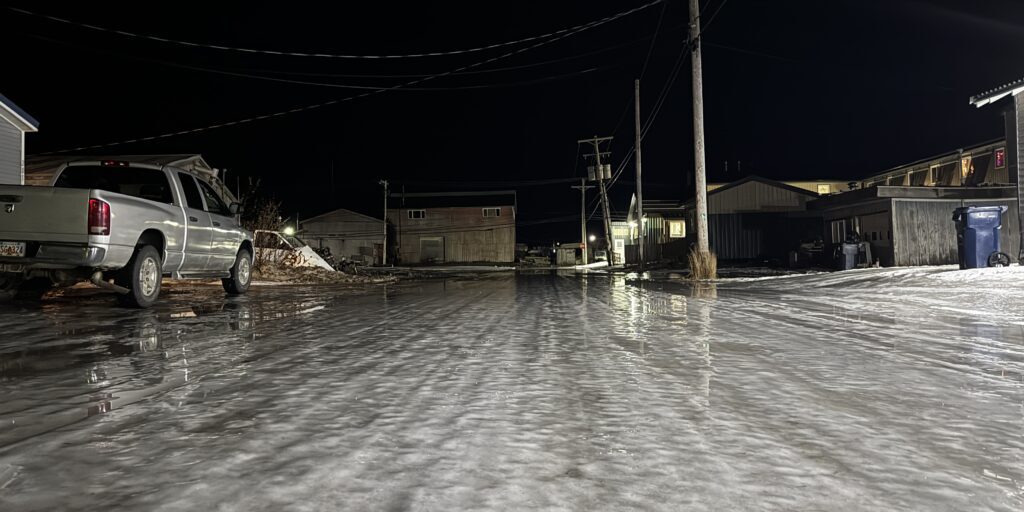Nome set a new record high for December 10 as unusually warm weather set in across western Alaska. The record 39 degree high – and record 33 low – bucks a downward trend Nome typically experiences as each day passes in the month in December.
Climate Specialist with the Alaska Center for Climate Assessment and Policy (ACCAP), Rick Thoman, said the mild and wet weather is due to southeast to south winds on the edge of a strong high-pressure system stretching from British Columbia to eastern Alaska.
“This is the classic pattern to get prolonged mild weather for western Alaska,” Thoman said in an email.
The mild weather is wreaking havoc on Nome, with Wednesday being the second day in a row for Nome Public Schools – and a host of other local organizations – announcing cancellations and delays.
The December warming cycle comes after a 10-day span that saw the average daily temperature skyrocket 28 degrees in just two days, followed by a drastic drop of 24 degrees in just three days. That rapid warming and cooling cycle resulted in a 2-inch thick layer of ice on many of Nome’s roads.
In the two weeks that followed, average daily temperatures have creeped back up from 7 to Tuesday’s historic high of 36. That layer of ice from the previous cycle, briefly buried under a fresh round of snow over the weekend, is now revealing itself as fresh snowmelt compounds traction problems.
Thoman said the pattern the region is experiencing often evolves into much colder weather as high pressures aloft shift west into eastern Russia. But his indicators are suggesting something different.
“That does not appear to be in the cards this time. It looks like a piece of the high will break off and wind up centered over the northwest Chukchi Sea, but low pressure will be stuck over the southern Bering Sea,” Thoman said. “This should result in a cool down, though at this stage cooling off to maybe normal, but the bad news is there's nothing to suggest significant snowfall in the next week.”
Freezing temperatures are forecast for the weekend, with lows in the teens.






